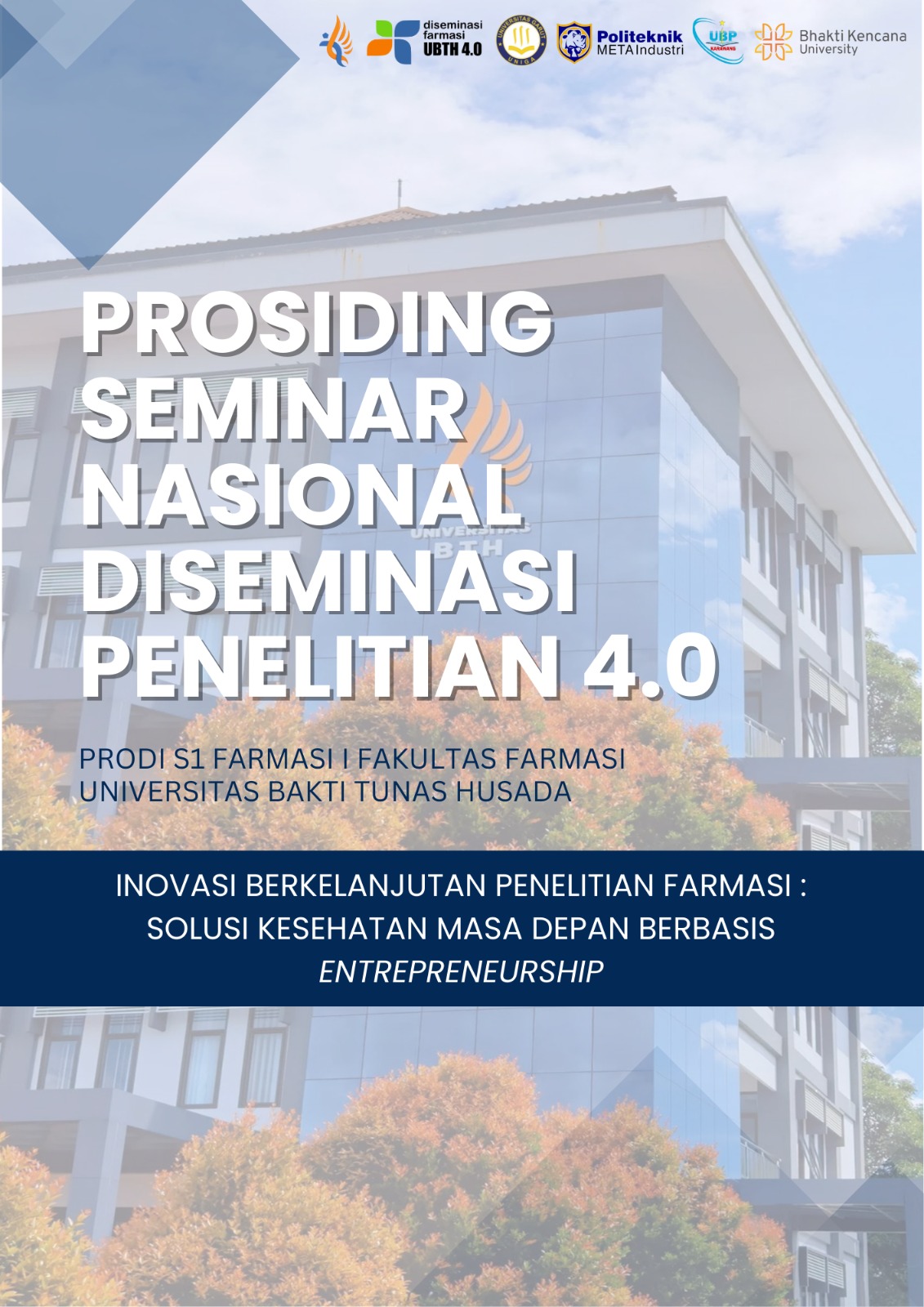Sintesis dan Karakterisasi Hidroksiapatit Tulang Ikan Gurame (Osphronemus gouramy) Menggunakan Metode Destruksi
Keywords:
hydroxyapatite, destruction, calsium, osphronemus, fishAbstract
Hydroxyapatite is an inorganic compound consisting of calcium and phosphorus with the chemical formula Ca10(PO4)6(OH)2, which has great potential as a bone implant material. Its bioactive, biocompatible and osteoconductive properties make hydroxyapatite able to interact with bone tissue naturally. Gourami fish bone waste, which is rich in calcium oxide (CaO), can be used as an alternative source for hydroxyapatite production. This research utilizes the potential of gourami fish bone waste as raw material in the synthesis of hydroxyapatite for bone implant applications. CaO from gourami fish bones was isolated using the digestion method and then synthesized by adding 2 M phosphoric acid (H3PO4) stirred at a speed of 700 rpm at a temperature of 40oC for 1 hour. This research aims to determine the elemental composition, functional groups, compound phases and surface shape of the synthesized samples. The results of XRF analysis show a Ca/P ratio of 0.9 and the results of FTIR analysis indicate the presence of hydroxyl groups (OH), phosphate groups (PO4) and carbonates (CO3) which are functional groups of hydroxyapatites but based on the XRD diffraction pattern it shows that there is an angle difference of 2θ between gourami fish bone hydroxyapatite with the comparison hydroxyapatite. SEM analysis showed diverse particle distribution in the synthesized hydroxyapatite.
References
Adriani, A. (2022). Penetapan Kadar Kalsium Pada Ikan Tongkol Segar Dan Asap Secara Kompleksometri. Jurnal Sains Dan Kesehatan Darussalam, 2(1), 35–41. https://doi.org/10.56690/jskd.v2i1.37
Afriani, F., Siswoyo, Amelia, R., Hudatwi, M., Zaitun, & Tiandho, Y. (2020). Hydroxyapatite from natural sources: Methods and its characteristics. IOP Conference Series: Earth and Environmental Science, 599(1). https://doi.org/10.1088/1755- 1315/599/1/012055
Agusriyadin, Fahmiati, Faradissa, Armid, & Laode A. Kadir. (2023). Studi Sitoksisitas dan Sifat Mekanik Nano Hidroksiapatit Dari Cangkang Kerang Pokea (Batissa violacea var. celebensis, von Martens 1897). Journal of Biological Research), 10(2), 64–73.
Akbar, A. F., ’Aini, F. Q., Nugroho, B., & Cahyaningrum, S. E. (2021). SINTESIS DAN KARAKTERISASI HIDROKSIAPATIT TULANG IKAN BAUNG (Hemibagrus nemurus sp.) SEBAGAI KANDIDAT IMPLAN TULANG. Jurnal Kimia Riset, 6(2), 93.
https://doi.org/10.20473/jkr.v6i2.30695 Angga Bagas Wijanarko, & Mochamad Arif
Irfa’i. (2023). Studi Temperatur Hidrotermal Pada Sintesis Hidroksiapatit Yang Berasal Dari Tulang Sapi Untuk Aplikasi Biomaterial. Jtm, 12(01), 1–6.
Asril, A., & Rahayuningsih, J. (2020). Sintesis Hidroksiapatit dari Tulang Ikan Patin melalui Metode Presipitasi. ALKIMIA : Jurnal Ilmu Kimia Dan Terapan, 4(1), 12– 16. https://doi.org/10.19109/alkimia.v4i1.463 3
Burhan, Suherman, P. H. A. (2021). Media Eksakta. Available, 17(1), 46–51.
Mangkuasih, S. M., & Rohmawati, L. (2021). Sintesis Hidroksiapatit dari Tulang Ikan Sapu-Sapu (Hypostomus plecostomus) dengan Metode Presipitasi. Jurnal Teori Dan Aplikasi Fisika, 9(2), 229. https://doi.org/10.23960/jtaf.v9i2.2818
Murzid, J. Q., Suharta, W. G., Spardi, I. W., Suardana, P., Kasmawan, I. G. A., Artawan, I. N., & Prajitno, D. H. (2023). Pengaruh Variasi Suhu Sintering Terhadap Struktur Kristalin Hidroksiapatit Tulang Iga Sapi. Kappa Journal, 7(2), 336–342.
https://doi.org/10.29408/kpj.v7i2.20840 Nikmah, A., & Kurniawan, R. (2024). Sintesis Hydroxyapatite Nanoparticle dari Limbah Cangkang Bekicot dan Aktivitas Antibakterinya sebagai Kandidat Material Biomedis. Jurnal Sains Dan Edukasi Sains, 7(1),23–28.
https://doi.org/10.24246/juses.v7i1p23-28
Siswoyo, S., Kumalasari, K., Wulan, S., & Afriani, F. (2020). Fabrikasi Perancah Berpori Hidroksiapatit dari Tulang Ikan Tenggiri dengan Alginat Sebagai Binder Alami: Sebuah Kajian Naratif. Jurnal Pendidikan Fisika Dan Sains (JPFS), 3(2), 35–42.

